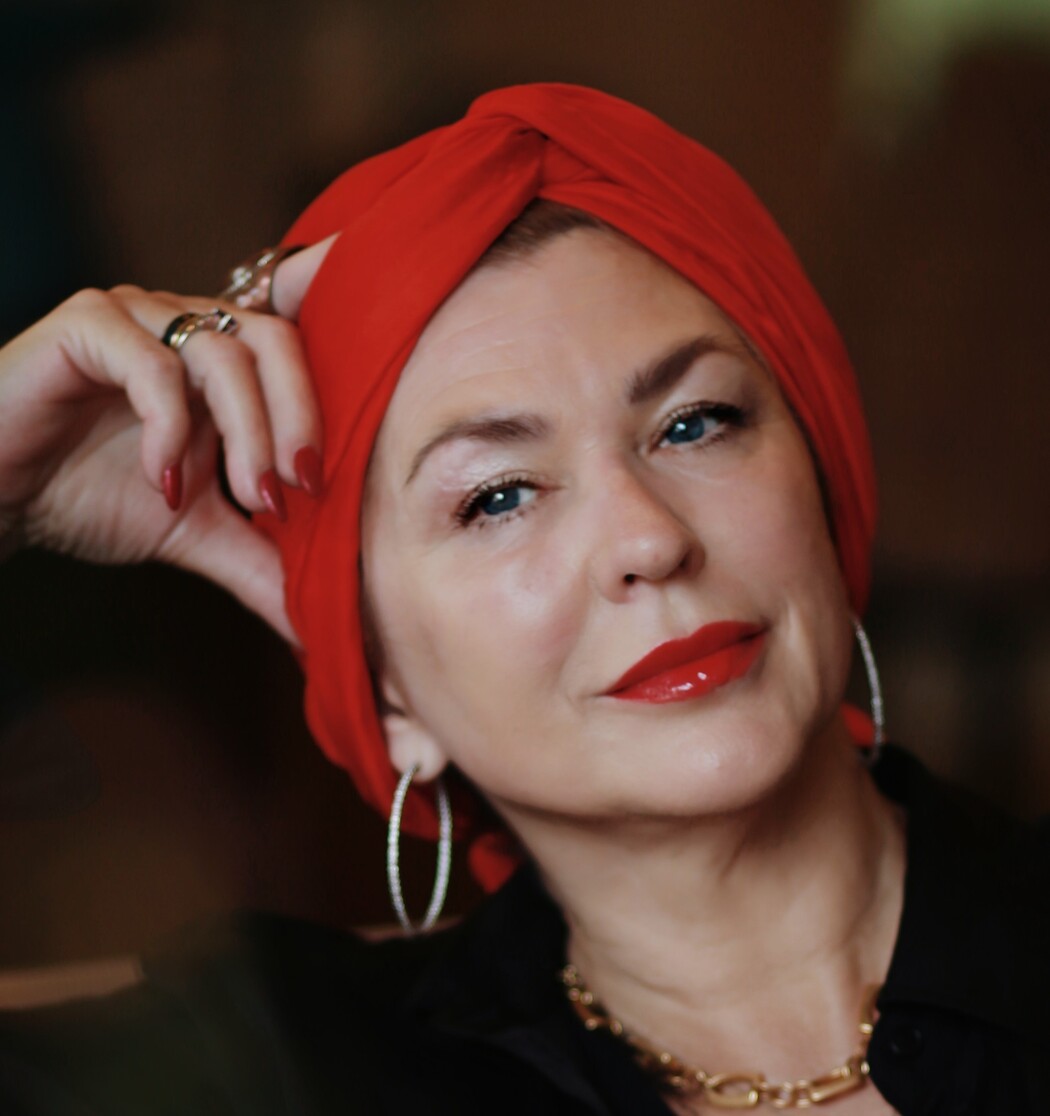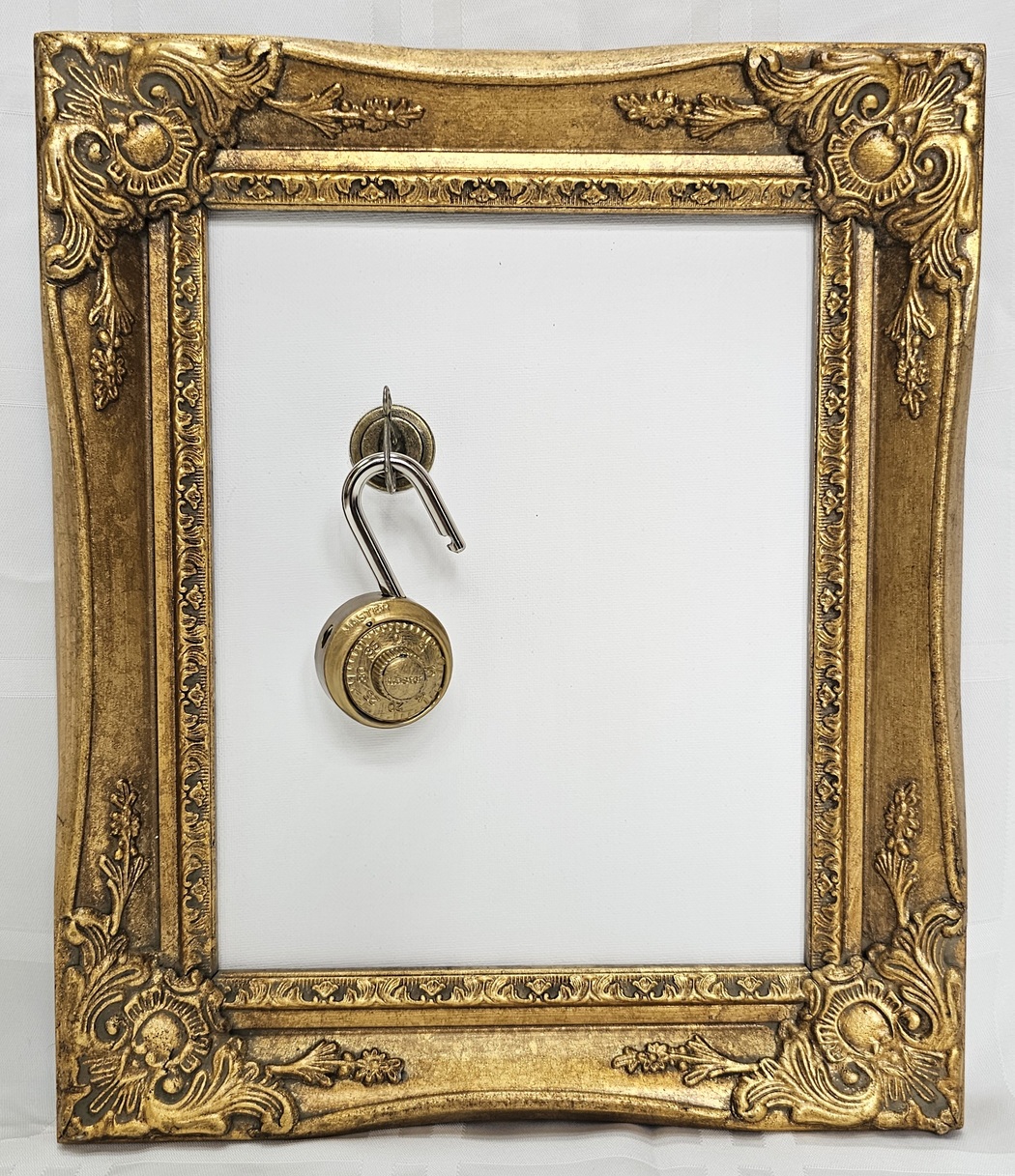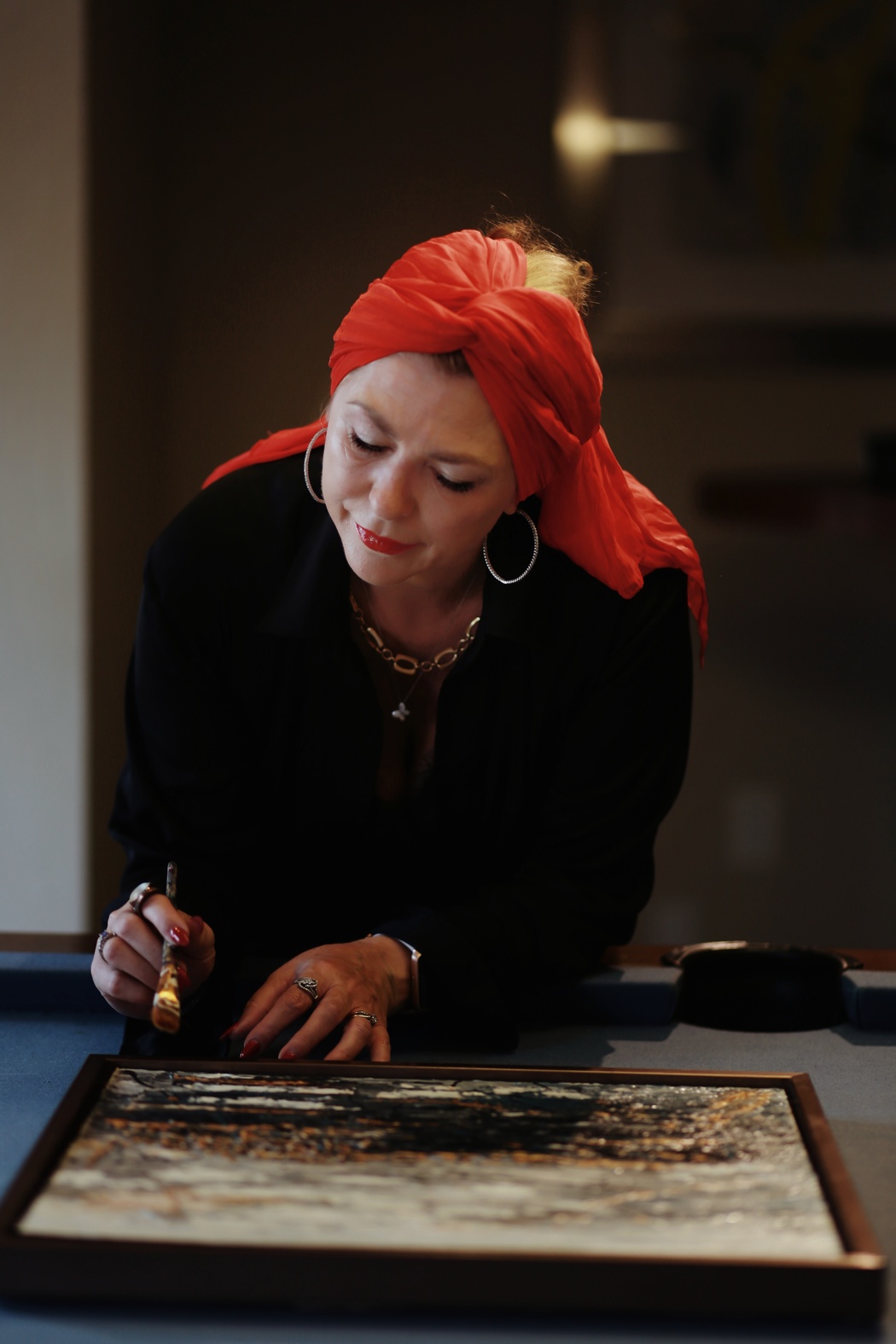Lana Reiber
Year of birth: 1966
Where do you live: North Carolina, USA
Your education: Lawyer
Describe your art in three words: Ecology, Spirituality, Self-Improvement
Your discipline: Painting, Sculpture
Instagram

Your creative path began at a later age, at the age of 45. What inspired you to start creating art at that moment, and how did your life experiences shape your artistic vision?
My life has been full of adventures. Moving from Kazakhstan to Russia, then to England and finally to the United States brought a variety of experiences. As the seeker grows older, he asks himself questions about his place in the world. When I was 45 years old, I visited the Byodo-In Temple in Hawaii. And it was there, in meditation, that the answer came to me: there is something else in this world besides physical matter, and I must become a guide between the Spirit and the visual embodiment of an idea that carries meaning and looks to the future.
You often use recycled materials in your sculptures. What attracts you to the idea of giving objects a second life, and how do you choose materials for your works?
One of the problems that worries me today is overconsumption and, as a result, the growth of garbage around the world. I want to contribute to the reduction of waste and use materials that I have at hand in my sculptures: cardboard, plastic containers, as well as wooden children’s blocks from second-hand stores. From paper, I make paste for sculptures for the final finishing. People are embarrassed to say that they buy second-hand things, but I think it’s important to promote this idea. 70% of my wardrobe consists of such things. I’d rather buy good quality clothes from a flea market than support fast fashion. By using discarded materials in art, I draw a parallel between discarded animals that are suddenly no longer needed, old people who are not useful, and once beloved things that have served their purpose.

Your works explore topics such as ecology, life and death, cyclical processes. How do these topics reflect your personal philosophy or experience?
I am concerned about the state of society and our planet. I try to clean up as much as I can, even collecting garbage in our area. I grow plants, shop with reusable bags and distribute both to everyone. My husband and I have been helping animal shelters for a long time, promoting the idea of adopting animals instead of buying them from the breeders, and involving others in this. Animal rights are something that needs to be paid close attention to. The realization that animals have intelligence and feelings led me to vegetarianism. Although this idea is very difficult for society to understand, I do not give up. After all, once terrible things like segregation or violence against women were considered the norm. The time has come for a new sincerity, vulnerability and human feelings.
You have lived in several countries, each of which has its own cultural heritage. How have these different cultural experiences influenced your art and creative process?
Let’s start with the fact that I was born and lived most of my life in Kazakhstan, where national traditions and foundations are very strong, often not the healthiest. Some of them are male dominance and violence against women, as well as treating animals as expendable material. The horse is one of the most intelligent animals, and it is used both for hard work and as food. In Sicily, I saw many horses tied up and abandoned on land without a drop of water! It completely shocked me! In my paintings, it is the horse that symbolizes beauty, purity and spiritual development. I formed a conscious attitude towards animals, especially towards dogs, in the United States. Also, in my works, there is often a dog, which embodies friendship, loyalty and a figure equal to a human.
The concept of artworks choosing their viewers is intriguing. Can you elaborate on how you perceive this connection between your art and your audience?
At the time of creation of the work, the stars come together in a special way, and you will not be able to “go into the same river twice”. Your hand is guided by something, some spirit, and it is this spirit that fills the work with its essence, as at the conception of a child. And the author creates in order not to keep his child nearby, but to let him go free. The art object begins its acquaintance with the world, going out into public space. It already contains its meanings and values, and only the viewer who shares and understands them will stop and start a conversation with it. That is, it is not the viewer who chooses what he likes and what he doesn’t. The work that has already been completed offers this interaction and is waiting for a person who is able to understand it, for the one who is interested in the same thing that is already embedded in the work. And the viewer who declares that he does not like the art object cannot diminish its significance. It’s as if two people with different views would claim that one’s values are more important than the other’s. This is unacceptable.
How did your time in Europe, especially your acquaintance with the great masters of the past, influence the development of your artistic style?
Europe is a unique region full of history and art. There you finally agree with Socrates that “I know that I know nothing.” Today, when all the works of genius have already been created, when the world’s museums are full of treasures of masters of the past, it remains for us to rethink these works in our current context. In addition to the history of art, the creation of my works is influenced by philosophers of the past, history, and literature. And it’s not about artistic style, but rather about meaning and one’s place in the world.

What challenges did you face when becoming an artist later in life, and what advice would you give to others who might want to make art at a similar stage?
When you are quite old, you can rely on experience and knowledge, and this is a huge plus. I worked hard and raised children, and later I had the opportunity to create something new with my own hands. Now is such an interesting period, and I want to have time for everything, to learn and to try a lot, but it’s a pity that I won’t have time to implement all this. Although I do have time, I’m only 58. I’m so grateful to the universe for giving me this chance, and I want to tell everyone: it’s never too late to start! Serve your truth and do Good! And take care of our planet!

Leave a Reply
You must be logged in to post a comment.